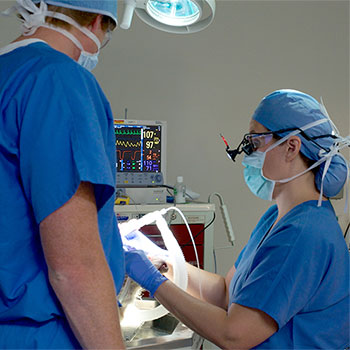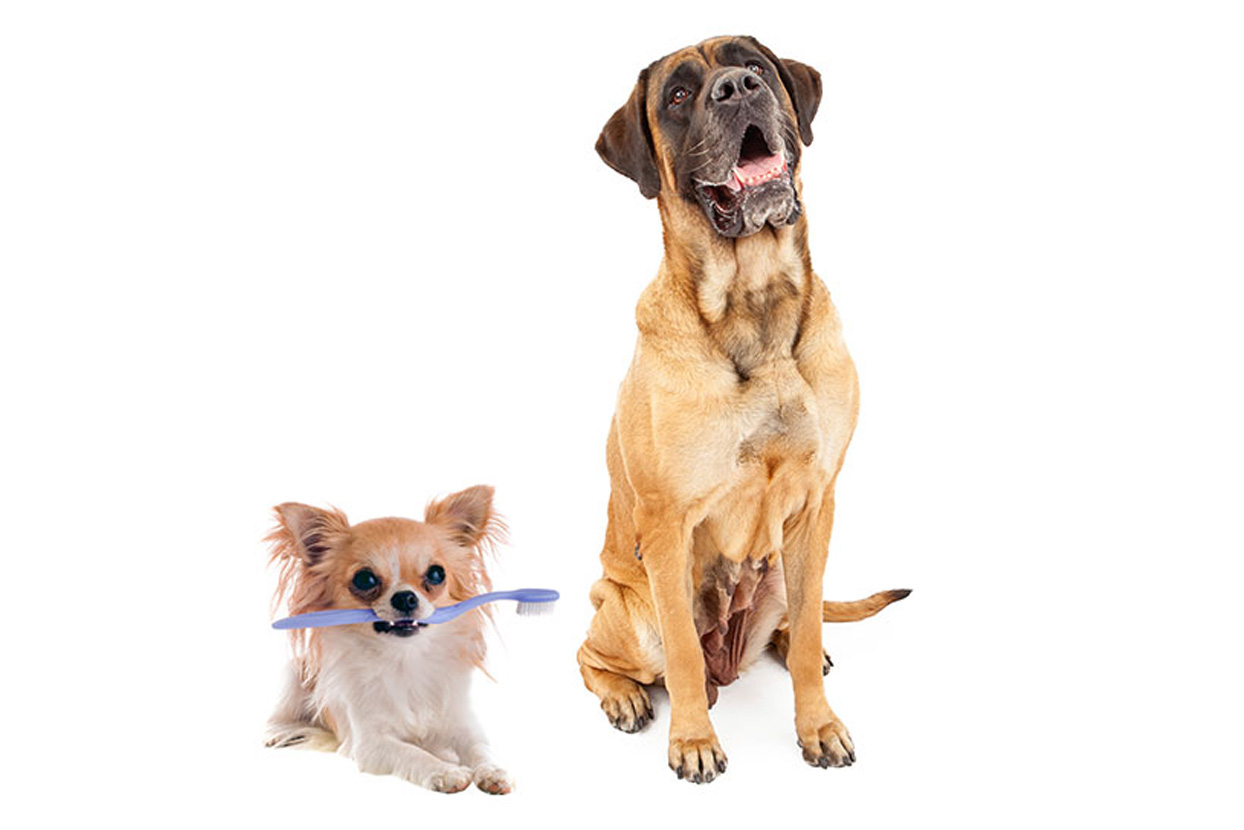 What does a 5-pound Chihuahua have in common with a 180-pound English Mastiff?
What does a 5-pound Chihuahua have in common with a 180-pound English Mastiff?
Both should have 42 teeth.
“That’s right,” says Dr. Brenda Mulherin, board-certified veterinary dentist at Iowa State University’s Lloyd Veterinary Medical Center. “Adult dogs should have 42 permanent teeth and adult cats have 30.” For comparison the average person has 32.
Cat or dog, big or small, they all need dental care, just like people do.
“Often overlooked, oral health care is an important part of your pet’s overall health,” Mulherin said. “Fido’s bad breath can be an indication of periodontal disease, but it can also signal a more systemic disease. The only way to know for certain is with a yearly veterinary visit that includes a dental check-up.”
As puppy breath gives way to doggy breath, Fido’s pearly whites don’t stay white long, either. “By age three, 80 percent of dogs and 70 percent of cats have some level of periodontal disease,” Mulherin says.
Small-breed dogs such as the Chihuahua and brachycephalic dogs (pugs, bulldogs, for instance) are at an increased incidence of periodontal diseases because the teeth are often crowded or perhaps they never erupted through the gum tissue.
Although mid- to large-sized breeds often have little to no crowding of their teeth, they, too, are susceptible to periodontal disease. And, periodontal disease worsens, as pets get older. It can also lead to other systemic problems involving the heart, kidney and liver, for example.
The good news, though, is that periodontal disease is a disease condition that can be managed with regular dental cleanings and oral examinations.
“A typical dental cleaning will involve intra-oral dental radiographs to see what’s below the gumline,” Mulherin says. “The tartar on the teeth can be easily seen and thus removed, but the plaque and tartar below the gumline can lead to infections, inflammation and bone loss, if not removed and treated.”
“To do a thorough oral examination and dental cleaning, the animal needs to be placed under general anesthesia. That’s the only way that we can safely and humanely clean below the gumline,” Mulherin says.
Pet owners can take an active role in their pet’s oral heath care by brushing its teeth daily. It’s not as daunting as it sounds and can have a tremendous positive impact, says Mulherin. “But, don’t start brushing your pet’s teeth until your veterinarian has examined its mouth to be sure there’s not an existing problem. That way you won’t cause your pet pain.”
“Regular tooth brushing a few minutes a day, as part of a normal routine with positive reinforcement, will help reduce plaque and, in the long run, can help save you costly dental visits, and more importantly may help your pet keep its teeth,” Mulherin says. “To get started, pet owners can use one of their old tooth brushes, and it’s not necessary to use toothpaste.”
Not only is regular tooth brushing good for long-term oral health care, it also allows pet owners to spot problems early.
A common misconception is that loss of appetite is a sign of dental disease in animals. “It’s not,” says Mulherin. “Not eating can indicate a systemic illness, rather than a dental condition.”
“Pets have a lot of the same dental conditions that people do,” Mulherin says. “Broken or infected teeth, fractured jaw, tumors or cysts in the mouth, and genetic conditions such as cleft palate.”
Mulherin advises pet owners to not wait for the pet’s annual exam if they suspect a dental problem. For advanced veterinary dental care, board-certified specialists are available. Mulherin is one of 125 veterinary dentists in the United States, and Iowa’s only board- certified veterinary dentist.
“Dental problems can lead to infections and loss of teeth, and in some cases, systemic illness. So, talk to your veterinarian about preventive dental care for your pet.”
June 2016

